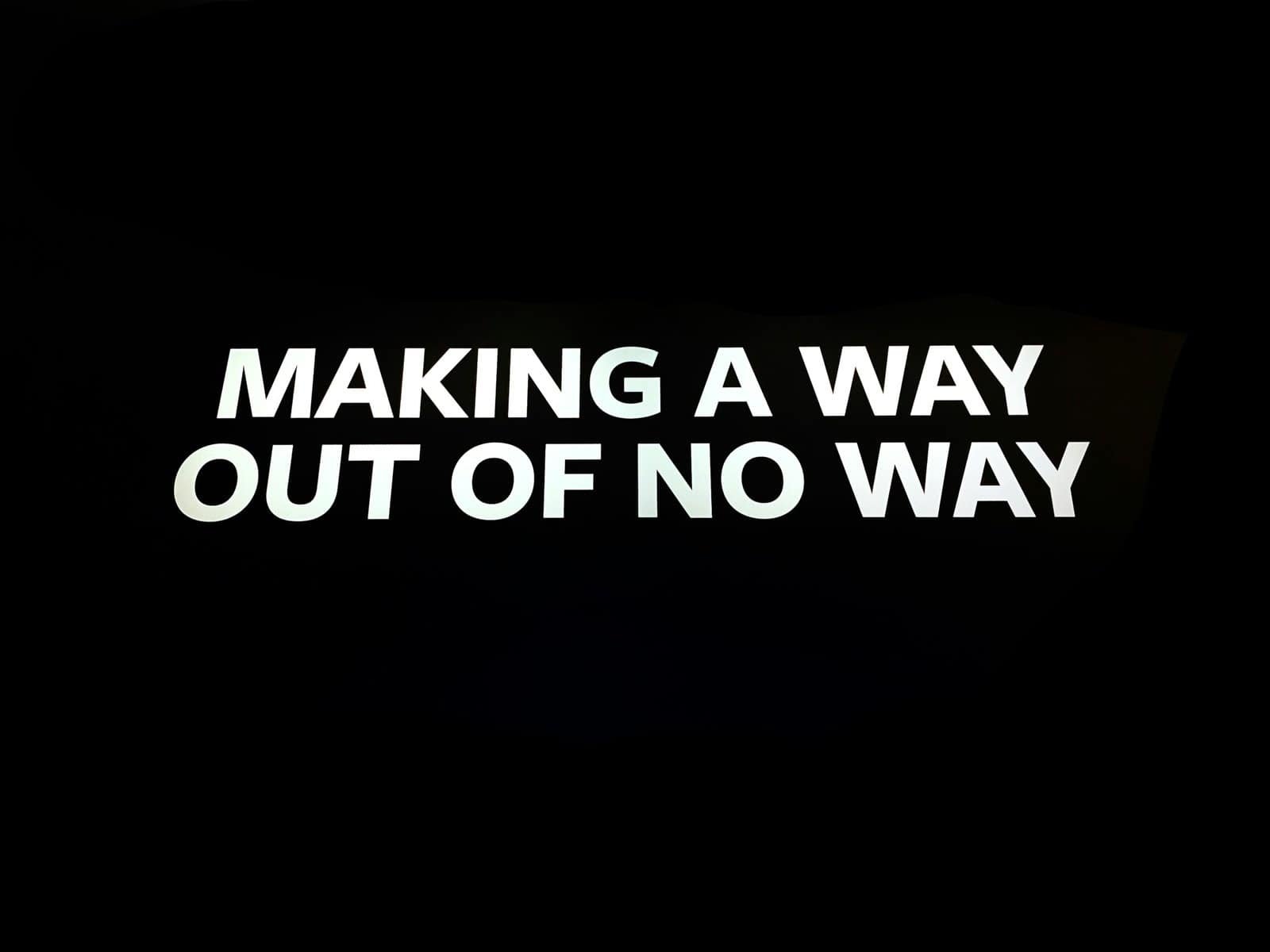Are you finding it hard to keep going after client rejections, slow months, or unexpected setbacks as a freelancer?
How Do I Develop Resilience As A Freelancer?

Introduction: Why resilience matters for your freelance career
Resilience is what helps you recover from setbacks and keep moving toward your goals. As a freelancer, your income, reputation, and wellbeing can swing quickly, so building resilience protects your livelihood and your mental health.
This article gives practical, detailed guidance you can apply immediately to strengthen your ability to cope, adapt, and thrive.
What is resilience in the freelance context?
Resilience is the capacity to respond to stressors—like a lost client, late payments, or creative blocks—without losing momentum.
It’s a combination of mindset, skills, support systems, and practical safeguards that reduce the impact of disruption.
Why resilience is especially important for freelancers
Freelancers face variable income, unpredictable workloads, and client-related uncertainty more often than employees.
If you develop resilience, you handle volatility with less anxiety, maintain higher quality work, and make better long-term decisions.
The core components of resilience
Resilience rests on several interlocking components: mindset, emotional regulation, adaptability, support, financial buffers, and continuous learning.
You’ll strengthen each component through targeted habits and systems so you’re better prepared when something goes wrong.
Mindset: your perspective and beliefs
Your mindset shapes how you interpret setbacks—either as proof you’re failing or as information you can act on.
Work to adopt a growth-oriented view that sees problems as solvable and mistakes as learning opportunities.
Emotional regulation: managing stress and reactions
Being resilient doesn’t mean avoiding stress; it means managing your response so stress doesn’t derail you.
Techniques like breathing, pausing, reframing thoughts, and time-limited worry sessions keep your nervous system under control.
Adaptability: adjusting to change quickly
You’ll face changing client needs, market shifts, and new tools. Your ability to pivot without panic is a core resilience skill.
Practice small pivots often so larger ones become less frightening.
Social support: building relationships and networks
Even if you work alone, you don’t have to be isolated. Support from peers, mentors, and friends reduces the emotional load.
Invest in communities where you can share wins, ask for advice, and find project partners.
Financial buffers: reducing anxiety about the unknown
A financial safety net buys you time to recover from lost work without making panic-driven decisions.
Savings, diversified income, and insurance are practical ways to reduce the financial shock of setbacks.
Continuous learning: building competence and confidence
The more solutions you know, the less threatening problems feel. Ongoing learning expands your toolbox.
Commit to regular skill upgrades and small experiments so you stay competitive and confident.

Practical daily habits that build resilience
Daily routines compound over time to strengthen resilience. Choose habits that support your body, mind, and work processes.
Below are habits you can adopt immediately, along with short explanations.
Sleep, movement, and nutrition
Your brain needs rest, oxygen, and nutrients to function well under stress. Prioritize consistent sleep, regular movement, and balanced meals.
Even short daily walks and a regular bedtime improve your cognitive resilience.
Clear work routines and rituals
Consistent routines reduce decision fatigue and give your day predictable structure. Create rituals for starting and ending work, and use time blocks for focused work.
These routines make it easier to recover focus after disruptions.
Reflection and brief daily journaling
A short journaling habit helps you process emotions and track what’s working. Spend five minutes each day noting wins and problems.
This builds a record you can review when you need perspective.
Micro-breaks and scheduled off-time
Productivity isn’t about grinding; it’s about sustainable effort. Schedule short breaks and at least one full day off weekly.
Regular rest prevents burnout and keeps your resilience reserves replenished.
Financial strategies to protect your freelance income
Financial resilience is the foundation that allows you to take the right actions under pressure. Use practical steps to stabilize your finances.
Below is a simple table comparing immediate and longer-term financial moves.
| Timeframe | Actions | Why it helps |
|---|---|---|
| Immediate (0–3 months) | Build a small emergency buffer equal to 1 month of expenses | Reduces panic after a lost client |
| Short term (3–12 months) | Create a budget, cut non-essential expenses, invoice faster | Improves cash flow and gives visibility |
| Medium term (6–24 months) | Save 3–6 months of expenses, diversify income | Gives breathing room and reduces single-client risk |
| Long term (2+ years) | Invest for passive income, obtain appropriate insurance | Builds long-term security and reduces stress |
Budgeting and cashflow management
Track your income and expenses closely so you can predict tight months and react early. Use simple spreadsheets or an app.
When you can anticipate a shortfall, you avoid panic decisions like underselling or missing bills.
Diversifying income streams
Relying too heavily on one client or one service increases risk. Create at least two additional income sources—retainers, passive products, or small partnerships.
Gradual diversification stabilizes your monthly revenue and reduces fear of losing any single contract.
Contracts, invoicing, and payment terms
Clear contracts reduce disputes and late payments. Use payment terms that encourage timely payment (e.g., deposits, milestone payments).
Automate invoicing and follow-up reminders to reduce administrative friction.
Pricing confidently
Undervaluing your work drives stress and makes you vulnerable to low-pay offers. Set prices that reflect your skill and market.
When you price confidently, you attract better clients and can say no when a job is a poor fit.

Client relationship strategies that improve stability
Strong client relationships are a buffer against churn and disputes. Use systems and communication habits to manage relationships proactively.
Here are techniques to improve trust and reduce sudden problems.
Clear scopes and documented agreements
Define deliverables, timelines, and revision policies in writing. Vague scopes lead to scope creep and conflict.
A clear contract protects both parties and reduces stressful conversations later.
Regular check-ins and progress reporting
Frequent, concise updates prevent surprises and make issues easy to solve early. Send brief status emails or quick calls at regular intervals.
This reduces last-minute crises and helps clients feel confident in your work.
Setting boundaries and saying no
You’ll get requests that don’t fit your skills, time, or values. Saying no preserves your capacity to do excellent work for clients who are the right fit.
Boundaries prevent burnout and maintain your reputation for delivering quality.
Ending relationships professionally
When a client relationship isn’t working, exit professionally with notice and handover documents. Avoid drama; keep documentation and remain polite.
A graceful exit preserves your network and reduces the emotional toll.
Handling rejection, criticism, and failure
Rejection is part of freelance life, but it doesn’t have to derail you. Treat each setback as data you can use.
Below are strategies to manage emotional fallout and extract constructive lessons.
Reframe rejection as feedback
When a proposal is declined or work is criticized, separate emotion from fact. Ask clarifying questions where possible and identify actionable feedback.
This fuels growth and prevents you from assuming the worst about your abilities.
Create a recovery ritual
Have a short sequence you follow after a painful client event: breathe, step away for 15–30 minutes, write one lesson learned, then make a small next step.
This ritual gives structure to recovery and reduces rumination.
Use a “no more than X” rule for negative events
Limit the time you’ll spend on negative feelings—set a box for worry or analysis. After that, switch to problem-solving or rest.
Bounded analysis prevents prolonged paralysis.
Collect evidence of competence
Keep a folder of positive client feedback, metrics, and successful project notes. Review it when you feel discouraged.
Concrete evidence counters negative self-talk and rebuilds confidence.

Managing loneliness and building community
Freelancing can be isolating, and isolation reduces resilience. Build systems to get social and professional connection regularly.
Below are ideas for structured ways to reduce loneliness.
Regular peer meetings and accountability partners
Find one or two peers to meet with weekly or monthly for accountability and emotional support. Discuss wins, problems, and goals.
This creates a safe space to get honest feedback and prevents isolation.
Join professional communities and coworking spaces
Whether online forums, Slack groups, or in-person coworking, consistent contact with peers normalizes your experiences.
Communities also offer referrals, collaboration, and emotional support.
Attend conferences and meetups purposefully
Make small goals for events—meet three new people, collect three insights—so networking is manageable and meaningful.
Intentional attendance reduces overwhelm and increases lasting connections.
Skills and competence: your resilience toolkit
A broader skillset increases your options when the market changes. Plan your learning so you stay adaptable and marketable.
Here’s a simple roadmap to structure your skills development.
Audit your skills and market demand
List your current skills and compare them to market needs for the next 12–24 months. Prioritize gaps that give you the best return.
This keeps your learning efficient and relevant.
Use microlearning and project-based practice
Small, regular learning beats infrequent binge learning. Pick a real micro-project to apply each new skill.
Practical application builds confidence and portfolio material simultaneously.
Ask for feedback and iterate
Use client or peer feedback to refine capabilities. Treat feedback as a mechanism for continuous improvement rather than a verdict on your worth.
Frequent small iterations prevent large, risky overhauls.

Productivity, planning, and time management
Productivity systems reduce stress and increase your ability to respond to surprises. Plan for flexibility, not total control.
Below are strategies to structure your days and weeks for consistent output.
Time-blocking and priority planning
Block your week by the type of work—deep focus, admin, marketing, client calls—and assign priorities.
Time-blocking reduces context switching and increases the predictability of progress.
Buffer time and contingency planning
Always schedule buffer time for unexpected client changes or personal needs. Avoid full-booking your calendar.
Buffers reduce the urgency that triggers poor decisions.
Weekly reviews and planning
Spend an hour weekly reviewing accomplishments and setting priorities for the next week. This habit keeps your long-term goals on track despite short-term chaos.
Weekly reviews let you adjust before small problems compound.
Creating boundaries and work-life balance
Boundaries keep work from creeping into your whole life, and balance protects your long-term motivation. Establish clear start/stop cues.
You’ll find better creativity, relationships, and energy when you treat rest as essential rather than optional.
Set physical and temporal boundaries
Designate a workspace and set work hours. Use rituals like shutting down your computer to signal the end of your workday.
Clear boundaries help you shift into restorative activities and reduce chronic stress.
Communicate availability to clients
Be transparent about your response times and working hours in your contract and initial communications. Manage expectations early.
Clients who respect boundaries are easier to work with and reduce after-hours interruptions.
Protect personal time fiercely
Schedule non-negotiable personal or family time and treat it the same as a client appointment.
This keeps relationships healthy and prevents resentment.
Self-care and mental health strategies
Resilience includes proactive care for your mental health. Treat care as part of your professional toolkit.
Small, consistent practices often have greater impact than occasional extreme measures.
Regular therapy or coaching
If you can, see a therapist or coach regularly to process stress and build coping strategies. Professional help accelerates recovery and reduces chronic strain.
Coaching can also help with business decisions and career growth.
Mindfulness and stress-reduction practices
Short practices like breathing, progressive muscle relaxation, or mindful walks reduce immediate stress and build long-term regulation.
You don’t need long meditation sessions; consistent micro-practices help a lot.
Use apps and tools that support wellbeing
Apps for sleep, meditation, exercise, and habit tracking can reinforce healthy routines and alert you when stress is rising.
Choose one or two that you’ll actually use rather than adopting every tool.
Recovery planning: what to do after a major setback
When something big happens—project loss, illness, or financial shock—follow a structured recovery plan to regain control.
A step-by-step approach reduces overwhelm and speeds up recovery.
Immediate triage: stabilize your situation
First, handle urgent practical items: invoices, communication, emergency bills, and health needs. Make a short checklist and complete the top three items.
Stabilizing prevents the situation from worsening.
Short-term action plan: 2-week recovery sprint
Set 3 clear goals for the next two weeks (e.g., contact 10 prospects, apply for support, negotiate payments). Make tasks small and measurable.
Short sprints make progress visible and rebuild momentum.
Medium-term strategy: 3–6 month rebuilding
Once immediate needs are met, plan revenue and skills actions for the next 3–6 months to restore your baseline. Include savings goals and marketing initiatives.
A medium-term plan prevents you from falling back into high-risk patterns.
Long-term changes: systems and policy updates
Implement systems that reduce future risk: contract templates, payment terms, multiple income sources, and an emergency fund. Learn and institutionalize lessons.
Systems turn hard-won lessons into automatic protection.
Measuring resilience: how you know you’re improving
You can measure resilience with both subjective and objective indicators. Track simple metrics to see progress.
Measuring creates feedback loops and motivation to continue.
Key metrics to track
- Emotional: frequency and duration of worry episodes
- Financial: months of runway, client concentration percentage
- Operational: response times to clients, number of new leads per month
- Health: sleep hours and exercise sessions per week
Regular review cadence
Review metrics monthly and do a deeper reflection quarterly. Use what you learn to adjust routines, finances, and marketing.
Consistent measurement prevents slow declines from becoming crises.
Exercises and prompts to build resilience (practical tools)
Simple exercises help you practice and embed resilient behaviors. Use these prompts daily or weekly.
- Gratitude and wins list: list three wins and one lesson each day.
- 5-minute worry box: set a 5–15 minute timer to focus on concerns, then close the box.
- Failure inventory: once a month, list three past failures and note what you learned from each.
- Skill sprint: commit to a 2-week mini-project to learn a new tool or technique.
- Outreach goal: set a weekly goal for connecting with new contacts (e.g., one message or coffee).
Templates and checklists (useful at moments of stress)
Below is a compact emergency checklist you can use when disruption hits. Keep it accessible.
| Step | Action | Notes |
|---|---|---|
| 1 | Breathe & pause | Take 5–10 minutes to calm your nervous system |
| 2 | Prioritize urgent items | List the top 3 urgent tasks (payments, health, client messages) |
| 3 | Communicate clearly | Inform affected clients of status and expectations |
| 4 | Stabilize finances | Review cash, adjust spending, request advances if needed |
| 5 | Short-term action | Set 3 recovery tasks for the next 48 hours |
| 6 | Ask for help | Contact peers, mentors, or a support group |
| 7 | Schedule reflection | Plan a 30–60 minute review after one week |
Tools and resources that support resilience
Certain apps and systems reduce friction and free you to focus on recovery and growth. Consider tools for finances, communication, and wellbeing.
Here are categories and examples you might evaluate.
- Finance: invoicing tools, budgeting apps, separate business bank account
- Productivity: time-tracking, calendar blocking, task managers
- Mental health: meditation apps, online therapy platforms
- Community: professional Slack groups, membership organizations
Creating a 30-day resilience plan
A focused 30-day plan turns ideas into habits. Below is a suggested structure you can adapt.
Week 1: Stabilize and assess. Build a one-month budget, create an emergency checklist, and set 3 priority professional goals.
Week 2: Build buffers. Start saving a small automatic transfer, contact 5 prospective clients, and join one peer group.
Week 3: Strengthen routines. Implement daily journaling, regular breaks, and two learning sessions for new skills.
Week 4: Institutionalize systems. Finalize contract templates, payment terms, and a weekly review ritual. Celebrate progress and plan next quarter.
Common mistakes that weaken resilience (and how to avoid them)
Certain habits unintentionally reduce your ability to recover. Be aware and correct them early.
Here are common pitfalls and practical alternatives.
- Mistake: Overworking to compensate. Fix: Schedule rest and accept slower progress for quality.
- Mistake: Relying on one client. Fix: Start small diversification efforts now.
- Mistake: Hiding problems. Fix: Communicate early and ask for help.
- Mistake: Chasing shiny tools constantly. Fix: Prioritize one tool and master it before adding more.
Final checklist: immediate steps you can take today
If you only do five things today, make them these:
- Create or update a written emergency checklist with your top 3 urgent actions.
- Send one check-in message to a past client or peer to maintain relationships.
- Automate a small savings transfer to your emergency buffer.
- Schedule a weekly review and a 15-minute daily reflection in your calendar.
- Pick one tiny learning goal for the next two weeks and commit to it.
Conclusion: the resilient freelancer is built, not born
Resilience is a set of habits, systems, and relationships you cultivate over time. By strengthening your mindset, finances, skills, and supports, you’ll face setbacks with less fear and more productive action.
Start small, measure what matters, and iterate. With consistent effort, your freelance career will become steadier, more satisfying, and more sustainable.
